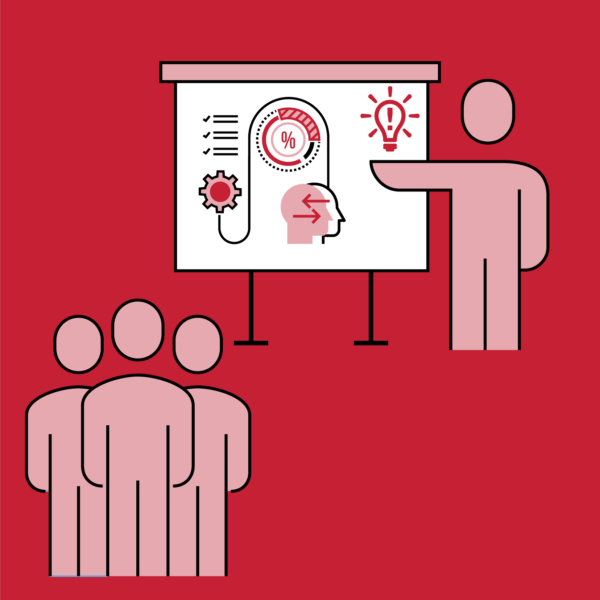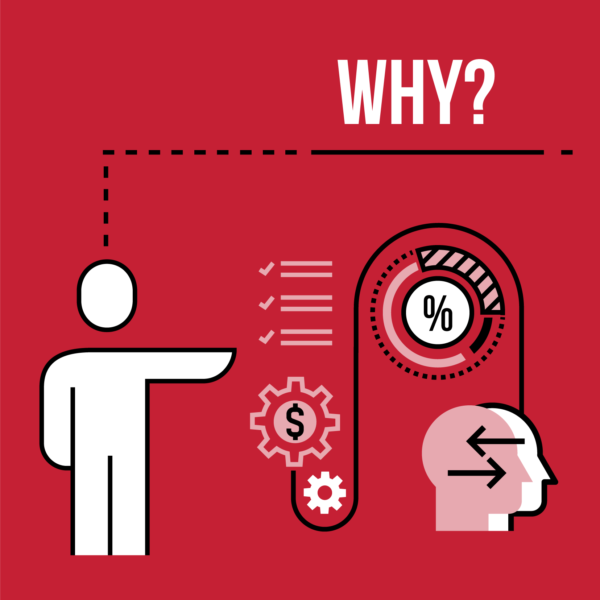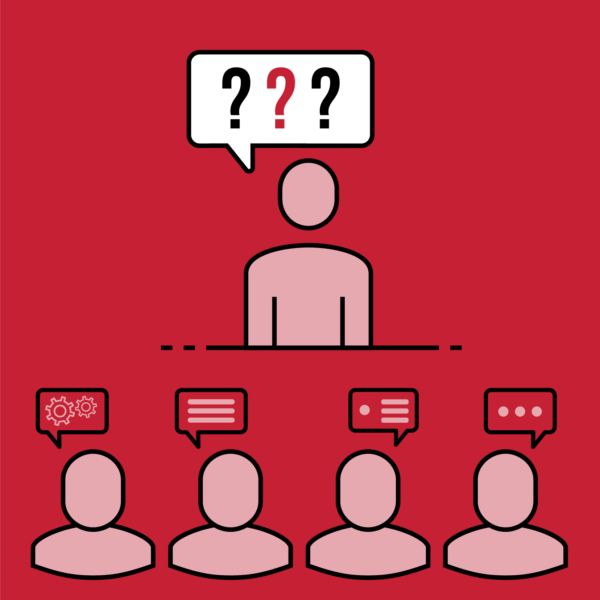Why INFORM

Outfit participants on a topic, issue, or event for future reference.
Call to action: Be aware, connect dots, listen, and digest information.
- Use metaphors and analogies to convey the story of your message. They illuminate agreements and disagreements, communicate difficult messages in a less threatening way, and help display abstract ideas in an accessible format.
- Leaders convene INFORM meetings to align a group on a common set of facts and create shared perspective on the current state.
- Common types of large-scale INFORM meetings include quarterly financial reports, announcements of new products/services, and leadership changes. Common small-scale INFORM meetings include onboarding a new team member, sharing client feedback, or setting a near-term performance goal for the group.
- An INFORM meeting should not create panic or stir up the rumor mill. Share as many facts and figures as possible. Use careful messaging and framing techniques to convey the critical messages with the appropriate level of severity to ensure you retain your credibility.
- Example: If you are sharing disappointing performance, clarify the impact on the organization and also share information on corrective actions.
- Setting the context for an INFORM meeting is a critical element for success. The information presented will need an overarching backdrop to engage participants in the importance of the message.
- Timing matters. Do NOT wait until you have ALL the information and answers to convene an INFORM meeting. The preference should be a short meeting with limited sharing and extensive Q&A session rather than having a fully crafted set of facts. Participants will reveal key areas of concern to use as topics for subsequent INFORM meetings.

Speak to Your Participants' Listening

Prepare your message based on what is relevant to your audience, not you.
Acknowledge what is true for them as it relates to the topic at hand.
Distinguish “fact” facts from “feeling” facts.
- “Fact” facts – “We are finalizing our decision on where our new office will be located.”
- “Feeling” facts – “You may be experiencing mixed emotions – curious about the future, concern about your commute, excitement about new workplace tools and amenities.”
- Use images and graphics over copy or text.
- As a leader, convey a story of how you have been through a similar journey or situation, if authentically possible. If not, articulate that this is new ground and share where you are getting your guidance or set of decision-making principles as you craft next steps.
- Avoid the temptation to convey more than three key points.
- Be cautious of shifting to BRAINSTORM or EDUCATE mode with the audience, as you may not be ready to suggest a new way of thinking or take action on any proposed ideas. The preference should be to take on a list of clarifying questions rather than feeling compelled to give more answers than you have prepared.

Begin with the WHY

The best leaders begin with the WHY of the topic. Convey the message in three key points.
- WHY are we convening? WHY is this the most valuable use of your time right now?
- HOW did we arrive at this set of facts? Share the story for context.
- WHAT information does the audience need to know?
Focus on why your message is important to each audience. Avoid starting with the WHAT of your message.
- Prepare points that are relevant and speak to multiple WHYs of all meeting participants (front line, middle, senior management).
- The WHY can be crafted as a three-part argument that appeals to participants’ head/logic, heart/feeling, and wallet/financial responsibility.
- Avoid dramatic statements and claims that are unfounded or overly presumptive. These can overcharge the emotion in the room and play to people’s fear over their logical mind.
- Don’t frame the WHY without outframing. Outframing takes a topic or point and makes it relevant to the next layer in an organization. If the topic is relevant to a city, talk about why your content might matter to a city AND a state. Similarly, if a topic is relevant to an individual, talk about why this topic matters to the individual AND the team they belong to and so forth.

Invite the Questions

Typical meetings allow more time for delivering messages rather than receiving feedback from participants.
Questions are an immediate form of feedback about where the audience is, how they are or are not integrating the key points, and what the speaker must focus on to reach the desired outcomes of the meeting.
- Actively manage how questions are gathered and fielded; raising of hands is not the only way to open the floor.
- Use a shared display to capture questions and answers. This creates the group’s memory about what happened in the room. Individuals tend to cast past events against their personal value system rather than what actually happened.
- Test run your Q&A with a small group of trusted advisors with divergent thinking. They will reveal your bias and assumptions about the audience and prepare you to be quick on your feet.
- Questions can divert attention from the speaker’s message to someone else’s agenda. By designing a process for gathering and responding to questions, you can be inclusive and still in control.
- A single voice (the leader) responding to questions can also be a single point of failure. Tee up at least two people to provide answers during the Q&A to avoid the potential of appearing like the leader “doesn’t know the answer.”
- A statement with a question mark is not always a question. Listen to the words and inflection of the participants. Be open to repeating the question you heard - which might vary from the question asked.

The SME

Use statistics, data, and research to bolster your key messages.
Invite experts into the room to explain the data. Meeting owners bolster the insight and add context (“So What?”).
- “We think this is the right thing to do” isn’t always enough for participants. Incorporate research, statistics, or anecdotes on what others have done to be successful so your ideas are relevant and thoughtful.
- SMEs can exist in many forms: leaders who are revered but are no longer with an organization, research entities, or technical experts who have written case studies or books on the field that is influencing your ideas.
- SMEs can also be seasoned team members or leaders in the group who have been through similar circumstances and can relate the story arc of “what to expect next” or share lessons learned. Engage these leaders as your SMEs and enroll them beforehand so they don’t derail or contribute to the rumor mill.
- Avoid using too many statistics - just a point of comparison will do.
- Don’t discount your personal reflection and the analysis that went into the information you have to share - it is both your position AND a reference to other thought leaders that make your case.
- Consider whether your audience will seek to refute your set of facts or research. If so, take care and caution to cite your sources.

Give a Take Home Message

The group can become ambassadors for your message if you invite and outfit them to do so.
Prepare a message in real time that gives the group a response to the question, “So what was that meeting about?”
- Have a few bullets started on the key messages and ask the group to fill in the blanks before the end of the meeting.
- Prompt participants by saying, “If you were to share two ideas from today’s meeting with your customer (or your spouse/partner or one of your subordinates), what would you say?”
- Use metaphors and analogies to help build a shared understanding of an idea or concept.
- Don’t create a word-for-word transcription of the message - only capture the key points.
- Don’t let just anyone weigh in. Call on your smartest, most articulate, or most influential leaders in the room to summarize what took place.
- To diffuse tense meetings where the messages were challenging to share, report out the list of key or clarifying questions that will be prepared for the next session.

